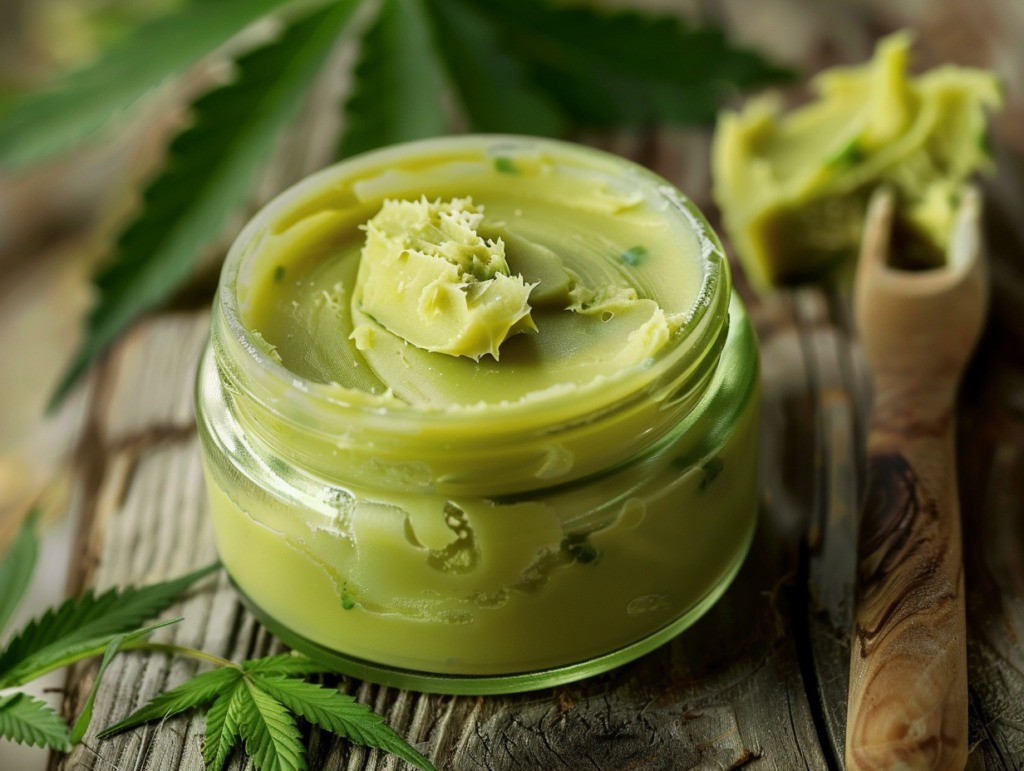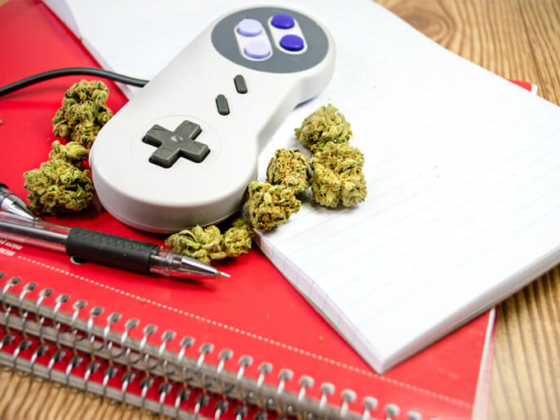Cannabis-infused products involve extracting THC, CBD, and other cannabinoids from the cannabis plant and infusing them into an oil, butter, alcohol, or other substances. This allows the effects and benefits of cannabis to be incorporated into a variety of edible and topical products like baked goods, tinctures, capsules, creams, and more.
Cannabis infusions provide an alternative way to consume cannabis without smoking or vaping. The effects from edibles and topicals tend to come on slower and last longer compared to other methods. Infusions allow people to obtain the therapeutic and recreational effects of cannabis discreetly and conveniently.
Many people use infusions to help manage pain, anxiety, insomnia, lack of appetite, nausea, and other conditions. The variety of infusion methods makes cannabis accessible to different preferences and needs. With some knowledge of the infusion process, it’s possible to create customized products at home.
Ingredients Needed
The primary ingredients for infused cannabis products are cannabis and a carrier substance.
Cannabis
Cannabis can be in the form of dried flower buds, trim, kief, hash, or concentrates like shatter, wax, budder, and distillate. Each form will impart slightly different effects and potencies in the final product. Flower and trim provide a more full-spectrum high from the various cannabinoids and terpenes present. Concentrates like distillate contain very high levels of THC but lack other compounds for a more well-rounded high.
Carrier Oils and Butters
Common carrier oils used are coconut, olive, avocado, and MCT oils. The oil will extract the cannabinoids and allow for easy mixing into recipes. Coconut oil is a popular choice because of its high saturated fat content which aids in extraction. Butter like cocoa and shea butter also work well.
Other Flavorings
Other ingredients can be added for flavor and enjoyment. Herbs, spices, vanilla, cinnamon, citrus zests, coffee, and more can complement the cannabis flavor. Sweeteners like honey or maple syrup can also be incorporated. Be creative and tailor flavors to the specific recipe.
Decarboxylation
Decarboxylation is a critical first step when preparing cannabis for consumption. It activates the compounds in cannabis like THC and CBD so that they can produce the desired effects.
What is decarboxylation exactly? Raw cannabis contains THCA and CBDA, the acidic, non-psychoactive forms of THC and CBD. Applying heat converts THCA and CBDA into their active counterparts by removing a carboxyl group. This process is called decarboxylation or “decarbing.”
Decarbing cannabis is necessary whether you’re making edibles, tinctures, topicals, or other infused products. If you don’t decarb, the cannabis won’t be fully activated and you won’t experience its full effects.
How to Decarb Cannabis:
- Break up cannabis buds into small pieces. This increases surface area for more effective heating.
- Spread the cannabis evenly on a baking sheet. Make sure not to overcrowd.
- Bake at 250°F for 30-45 minutes. Ovens vary so keep an eye on it.
- Cannabis is ready when it’s lightly toasted and dried out. It will be crumbly when pinched.
- For a quicker method, decarb in a sealed mason jar at 240°F for 40 minutes.
- Let cannabis cool before using for infusions. Store in an airtight container.
Getting the right decarb time ensures you activate as much THC and CBD as possible. While exact times vary between ovens, aim for 30-45 minutes. Going beyond 45 minutes risks degrading the cannabinoids.
Decarboxylation is the first critical step in preparing optimized cannabis edibles and infusions. Always decarb your cannabis properly before proceeding with recipes.
Choosing a Method
When making cannabis-infused products, you have several options for infusion methods. Some of the most common are:
Oils and butters: Infusing cannabis into oils like olive, coconut, or avocado oil, or butters like coconut oil or ghee, allows you to cook or bake using the infused oil or butter. Oils and butters are versatile bases for many edibles. However, the effects may take 1-2 hours to feel since they need to be processed by the digestive system.
Tinctures: Tinctures are alcohol or glycerin-based cannabis extracts. They have a faster onset than edibles since they are absorbed under the tongue. However, dosing can be trickier with tinctures. They also have a distinct cannabis taste.
Cooking/baking: You can add cannabis directly when cooking recipes like cookies, brownies, cakes, etc. This allows you to control the texture and flavor profile. However, the dosing can be inconsistent if not mixed thoroughly. The effects take 1-2 hours to feel.
Capsules: Filling capsules with cannabis coconut oil or tinctures provides consistent dosing. Capsules are tasteless and odorless. However, effects take 1-2 hours to feel as capsules must digest. The prep work of filling many capsules can also be labor intensive.
Consider your goals, preferred method of consumption, speed of onset, and taste when choosing an infusion method. Test different methods to find what works best for you. Proper technique and dosing is key for any infusion.
x
Infusing cannabis into oils and butters is a popular method for making edibles. It allows you to precisely control the dosage and incorporate cannabis into all kinds of recipes. Here are some step-by-step instructions for infusing oils and butters at home:

Ingredients
- Cannabis – the fresher the better. Use trim, shake, or bud. Decarboxylate first.
- Oil or butter – coconut, olive, avocado, grapeseed, or clarified butter all work well. Calculate the amount needed for your recipe.
- Cheesecloth, fine mesh strainer, or nut milk bag for straining.
Instructions
- Decarboxylate the cannabis in a 240°F oven for 40 minutes.
- Combine the decarboxylated cannabis and oil/butter in a mason jar or other oven-safe container. Use a 1:4 cannabis to oil ratio. For butter, a 1:2 ratio works well.
- Seal the container loosely and place in a water bath. Bring the water to a low simmer.
- Simmer for 2-3 hours, checking and stirring occasionally. Longer infusion times result in more potent extractions.
- Strain the mixture through cheesecloth or a fine mesh strainer, squeezing out any excess oil. For the cleanest results, use a nut milk bag.
- Store the infused oil or butter in an airtight container in the fridge for up to 2 months.
Coconut, olive, avocado, and grapeseed oils have high smoke points so they work for sautéing. Butter has more saturated fat and a nutty flavor. Clarified butter has a higher smoke point than regular butter.
You can also infuse using a slow cooker on low for 4+ hours, or an Instant Pot on low pressure for 45 minutes. Oven infusion at 200°F for 2-3 hours also works. Monitor the temperature to avoid burning.
With this simple process, you can easily make versatile cannabis-infused oils and butter at home to enjoy in all kinds of edibles. Adjust the cannabis amount to achieve your desired potency.
Making Tinctures
Tinctures are alcohol or glycerin-based cannabis extracts that are easy to dose and absorb into the body efficiently. Tinctures allow you to avoid inhaling anything into your lungs. There are two main methods for making tinctures at home: alcohol tinctures and glycerin tinctures.
Alcohol Tinctures
Alcohol tinctures provide faster effects than glycerin tinctures since the alcohol more readily absorbs cannabinoids. However, alcohol tinctures will have a stronger taste.
To make an alcohol tincture, you’ll need high-proof alcohol like Everclear, vodka, or rum. The higher the proof, the better it will dissolve the cannabinoids.
Jar or Steeping Method:
- Break cannabis into small pieces and decarboxylate in the oven at 220°F for 30-60 minutes.
- Place decarboxylated cannabis in a mason jar and pour in alcohol until all plant matter is submerged.
- Seal the jar and store in a cool, dark place for 2-6 weeks, shaking occasionally.
- Strain the liquid through a cheesecloth and store in an airtight container.
Evaporation Method:
- Decarboxylate cannabis as above.
- Place in a mason jar with alcohol and heat at 170°F for 20-40 minutes to fully extract cannabinoids.
- Strain through a cheesecloth.
- Gently heat the liquid to evaporate alcohol until the desired potency is reached.
- Store in an airtight container.
Glycerin Tinctures
Glycerin tinctures provide a lighter, smoother flavor. However, effects come on slower than alcohol tinctures. Use food-grade glycerin only.
The process is the same as described above, except using glycerin instead of alcohol. Heat for a shorter time, as glycerin scorches more easily. The steeping time may take 4-8 weeks or longer since glycerin is thicker. Shake the jar daily to mix. Glycerin tinctures can have a long shelf life of up to 3 years.
Cooking With Infusions
Cooking and baking with cannabis-infused oils and butter allows you to easily add cannabis to your favorite recipes. The key is to simply substitute a portion or all of the oil or butter called for with your infused version.
Calculating Potency
When substituting with an infused oil or butter, be sure to calculate the amount of cannabis in your final recipe. If you infused 1 gram of cannabis into 1 cup of oil, then used 1/4 cup of that oil in brownies, your brownies would contain approximately 250mg of cannabis (1 gram cannabis / 1 cup oil = 125mg THC per 1/4 cup oil). This allows you to appropriately dose your edibles.
Popular Recipes
Many baked goods and dishes work well with infused oils and butters. Some of the most popular are:
- Brownies, cookies, cakes – substitute up to 100% of oil or butter
- Pesto, salad dressings, sauces – use infused olive or coconut oil
- Pancakes, waffles – use infused butter in the batter
- Scrambled eggs – cook with infused butter or oil
- Grilled cheese – butter the bread with infused butter
The key is fat solubility – the THC binds to the oils and butters, allowing you to seamlessly integrate cannabis into all types of recipes. Get creative and enjoy consuming your cannabis in a tasty, discreet edible.
Check 10 Cannabis Recipes to Try at Home
Dosing and Potency
When cooking with cannabis, it’s important to carefully control the potency and dosing of your edibles. Unlike smoking or vaping, edibles can take 30 minutes to 2 hours to kick in, and the effects can last much longer, up to 8 hours. It’s easy to accidentally over-consume edibles, leading to an unpleasant and intense high. Follow these tips for dosing edibles responsibly:
Methods for Calculating Potency
The key to proper dosing is understanding the potency of your cannabis infusion. When making butter, oil, or tinctures, always note the amount of cannabis you started with and the volume of the finished infusion. For example, if you used 7 grams of 20% THC cannabis to make 1 cup of coconut oil, your infusion contains about 140mg of THC per tablespoon. Use ratios and math to adjust recipes and servings accordingly.
Starting Low and Slow
Edibles affect everyone differently based on metabolism, tolerance, body chemistry, and more. It’s impossible to predict exactly how strong an edible dose will be for a given individual. Start with very low doses, such as 5mg of THC, and wait at least 2 hours before taking more. Increase slowly in 5-10mg increments until desired effects are reached. Consuming too much THC can lead to anxiety, paranoia, nausea, and other unpleasant effects.
Effects of Different Methods
The infusion method also impacts potency. Oils and butter fully extract cannabinoids from the plant material, making for potent edibles. Tinctures extract slightly less for milder effects. Cooking with decarboxylated flowers results in weaker edibles. Understand the differences between preparation methods to better control dosing. Start low and increase slowly no matter the method used. Responsible consumption takes experimentation and patience.
Storing and Shelf Life
Properly storing your cannabis infusions is crucial for maintaining safety and potency. Here are some tips:
- Store infused oils, butter, and tinctures in airtight containers in the refrigerator or freezer. Oils and butters can be stored for 2-6 months in the fridge or 6-12 months in the freezer. Tinctures can last 1-3 years when refrigerated.
- Keep infusions away from heat, light, and oxygen to prevent spoilage. Light and oxygen degrade cannabinoids over time.
- If storing for longer periods, consider smaller containers to minimize air exposure when opening. Or use food-grade plastic/glass containers vs mason jars which can break and leak.
- Look for signs of spoilage before consuming an infused product. Check for mold, off smells, and changes in color or texture. If in doubt, don’t consume.
- Properly stored cannabutter may turn light green over time due to chlorophyll leaching out. This is normal and not harmful.
- Tinctures may darken and become more viscous but remain safe to consume if stored properly. Shake well before using.
- Freezing is ideal for long-term storage. Infusions kept frozen can maintain potency and quality for over a year. Thaw in the refrigerator before using.
Proper storage maximizes the shelf life and preserves the safety and potency of homemade cannabis infusions. Following these guidelines will help avoid waste and get the most out of your efforts.
Safety and Legality
Using cannabis-infused products safely starts with understanding your tolerance and dosage. Start with a low dose, especially if you’re new to edibles, and wait at least 2 hours to feel the full effects before consuming more. Being patient prevents accidental overconsumption.
Store infused oils and butter in the refrigerator or freezer to prevent mold growth. Check regularly for any signs of mold and discard immediately if found. Consuming moldy products can cause serious illness.
Make sure to clearly label any infused ingredients to avoid accidental ingestion, especially by children or pets. Keep all cannabis products securely out of reach.
The legal status of homemade edibles varies greatly by location. In regions where recreational or medical cannabis is legal, there are usually regulations around allowable quantities for personal cultivation and consumption. Research your local laws thoroughly. Where all cannabis use remains illegal, so does home edible production. Consuming or providing others with homemade edibles in prohibited areas carries serious legal risks. Know the laws and consume responsibly.




